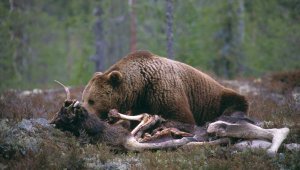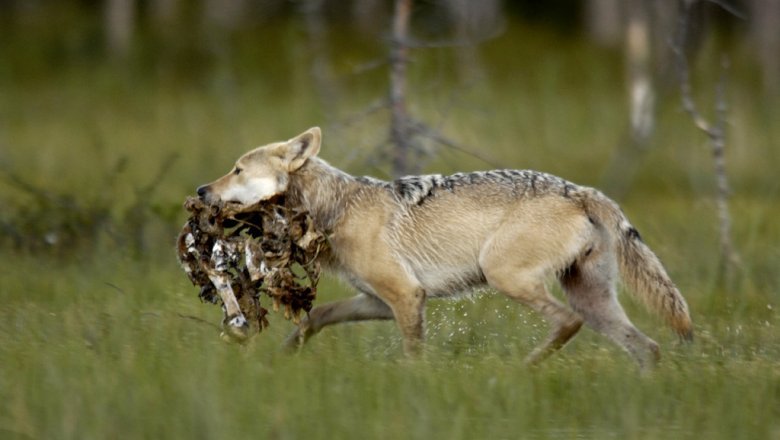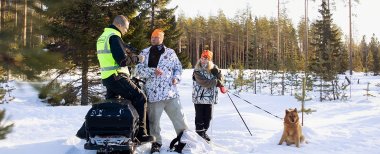Genetic methods have become an established part of monitoring the wolf population. DNA samples have been obtained not only from dead wolves (wolves killed by hunters or shot by permission of the police and specimens found dead) and individuals fitted with radio collars but also from faeces and urine samples collected in the field.
Whenever a wolf is sent to the Natural Resources Institute Finland as a specimen, its body and skull measurements are taken and a tissue sample is collected for DNA analysis. The Institute stores permanently tissue samples from all specimens it receives but does not have the facilities for long-term preservation of entire carcases. Actual scientific collections are maintained by the natural history museums of Finland, whose sample collections contain most wolf skulls or pelts sent to the Natural Resources Institute as specimens.
In addition to samples from modern wolves, historical samples from museum collections have been used to map genetic diversity in the Finnish wolf population. Connections between the Finnish population and wolf populations in Scandinavia and Russia have also been studied by means of genetic research.
Percentages show the degree of similarity with the reference material
In DNA analysis, the probability of a wolf specimen belonging to the reference group is represented with a percentage. For example, if a wolf specimen’s percentage is 95, its probability of belonging to the reference group is 95%. This probability can never reach 100%, as each individual wolf's genetic makeup is different and there can never be two absolutely identical animals in the reference database. It is important to note that this percentage does not represent the wolf's "degree of hybridisation".
The same result can be achieved by comparing any pedigree dog to a reference database comprising of other specimens of the same breed, for example. A 95% result does not mean that the dog is 95% purebred and 5% mixed. Similarly, if the probability of person A being the father of person B is 98%, it does not mean that 2% of person B's father is someone other than person A.
Dogs and wolves are clearly separable using genetic methods
Finnish wolves form a very tight group that is distinct from dog breeds such as the Siberian Laika and the German Shepherd that have been used as control groups. Hybrids have been very easy to recognise. Between 1996 and 2010, three wolf-dog hybrids have been found in Finland (Kuhmo 2010, Juva, 2005, Parkano 2010). The mitochondrial DNA in all three cases has been from the wolf, which means that all of the hybrids were the result of mating between a female wolf and a male dog. Research conducted elsewhere has confirmed that hybrids are typically the offspring of female wolves and male dogs.
The study found no significant differences between the wolves of Northern Europe and the wolves living in other parts of the world; Nordic wolves are no closer to dogs than other wolves. Another international study published last year corroborates this as it also indicated that Finnish wolves do not differ from the wolves of Eastern Europe.
A Swedish-Finnish-Russian study (onlinelibrary.wiley.com) published in autumn 2020 found no indications of recent hybridisation with dogs in the Finnish or Scandinavian wolf populations. This conclusion was reached by analysing the entire genome of wolves, dogs and known dog-wolf hybrids.


